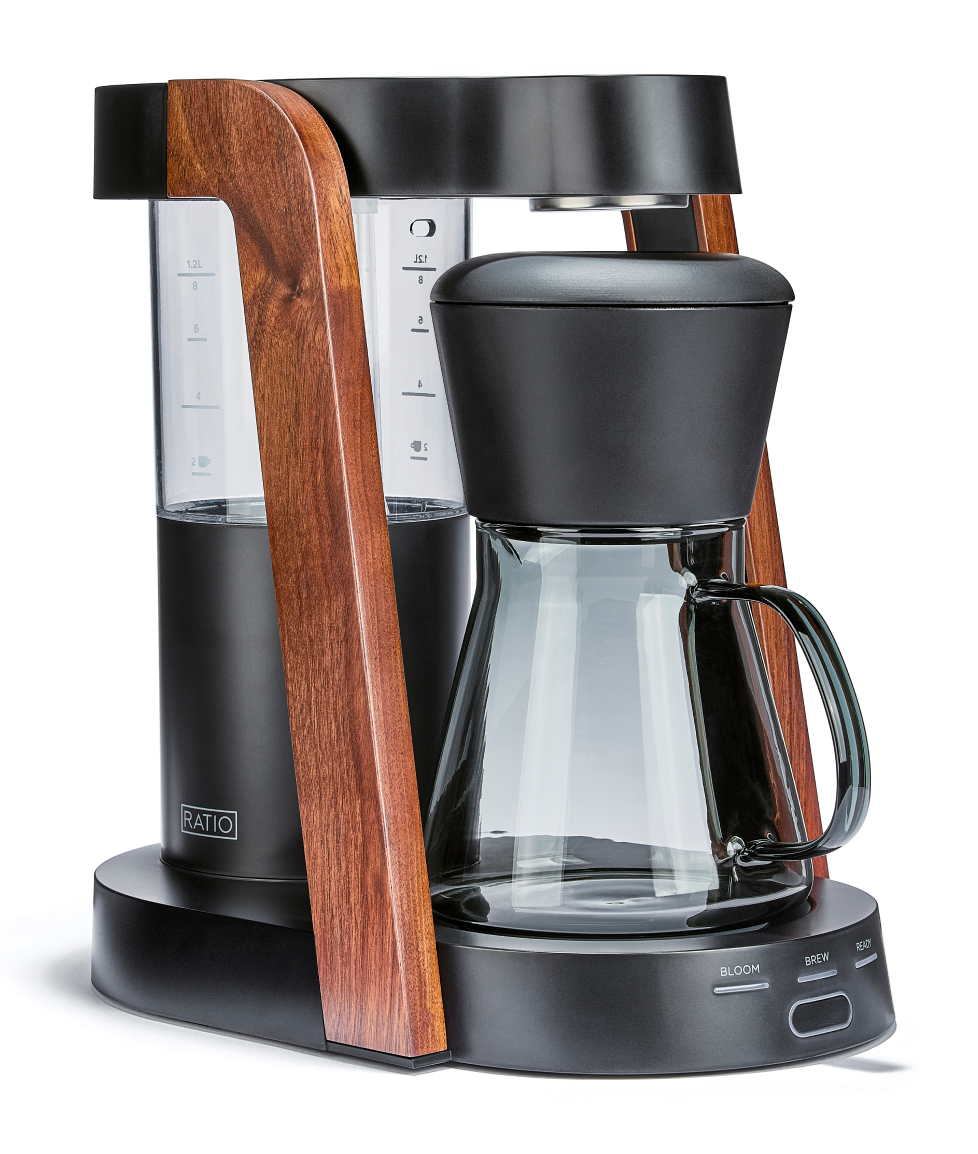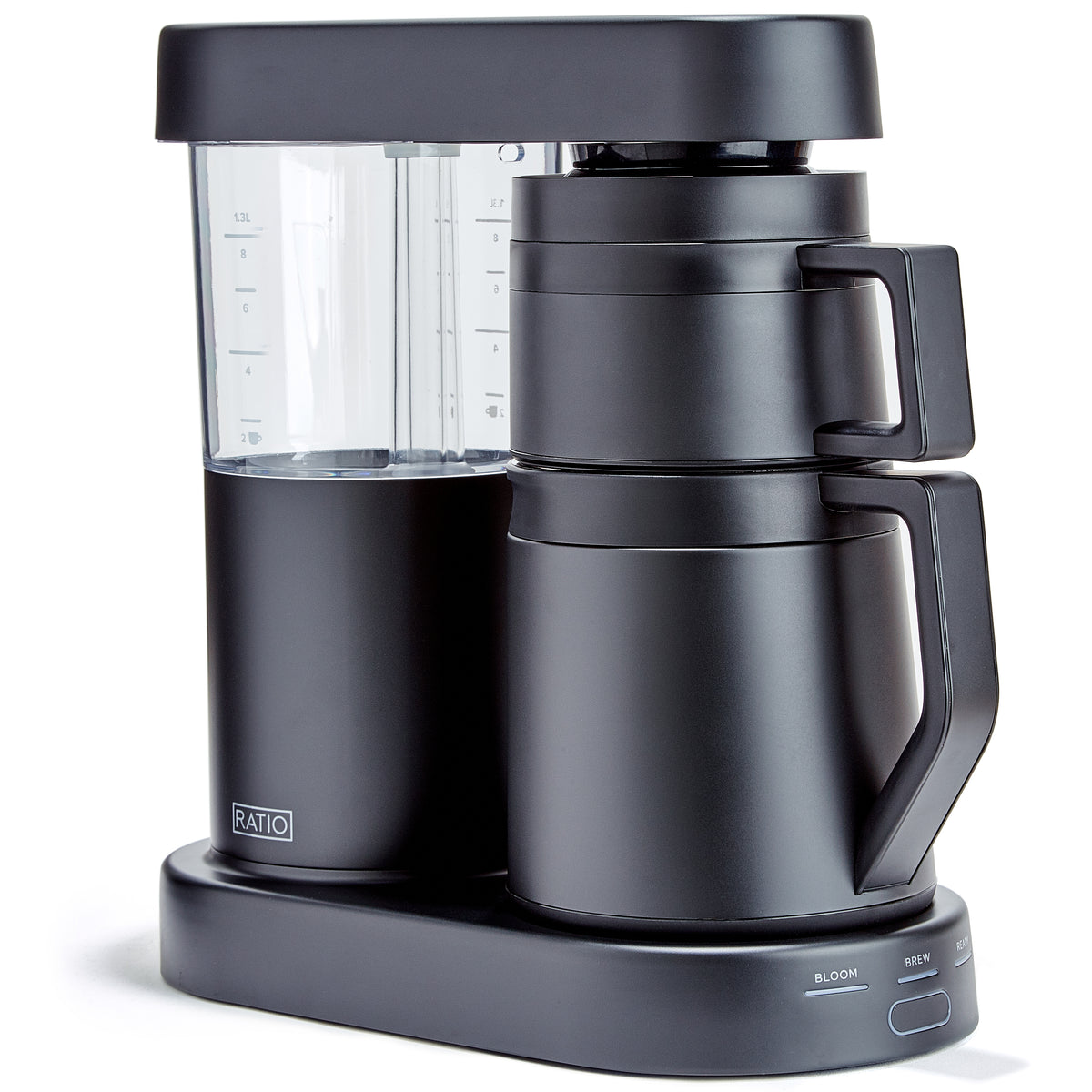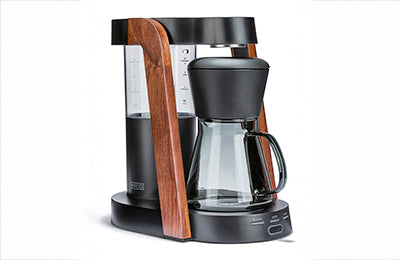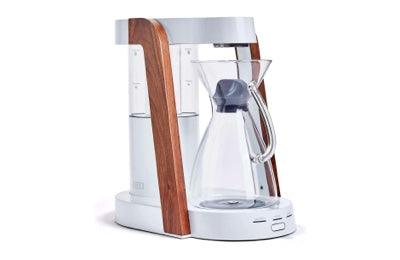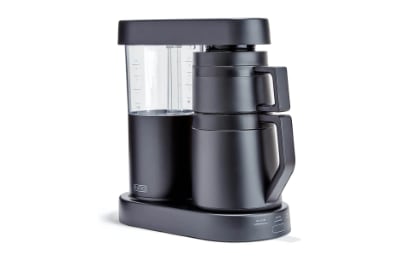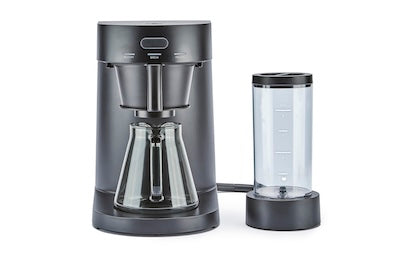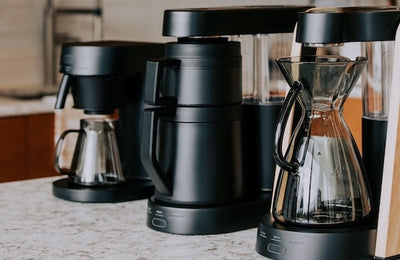Designing the Ratio Eight

Since the Ratio Eight started shipping in January 2015, I’ve received quite a few questions about the design process that went into developing this machine. We set out to make a fundamentally different kind of coffee brewing machine that had the ease and convenience of a simple drip coffee maker with the taste and precision of a handmade, pour over cup of coffee.
We made a ton of mistakes along the way. The journey unfolded over nearly two years, starting with concepting meetings, design iterations, market research, and prototype development, production facility visits, and lots of continuous refinement. Sometime, ask me about the four pallets of handblown glass parts we had to recycle because they didn’t mate properly with the metal parts.
Developing a product built of natural materials with a high design aesthetic that delivers a consistently exceptional product (great coffee) is a lot harder than I thought (and I thought it was going to be pretty hard). While I’m glad we’re on this side of the process, there was a lot we learned and we had a lot of fun.
Read on to learn more from the team I formed to build the Ratio Eight: industrial designer James Owen and mechanical engineer Jim Thorne. These are typical of the questions we’ve received since announcing the Ratio Eight in late 2013.
-Mark Hellweg
Founder

What is your background/training/experience with design? With designing products like Ratio?
James: I’m an industrial designer by training with 20 years of experience working on products in consumer electronics, footwear, furniture, housewares, automotive design, retail packaging, sports equipment, and medical products. I’ve worked on quite a few large and small appliances over the years for Sharp Electronics and Whirlpool. So I was able to draw on some past research, user experience, and my own anecdotal experience (and frustration!) with countertop appliances to help inform a better solution for Ratio.
Jim: I’m a classically trained mechanical engineer with a wide ranging background in design. I studied at MIT and Stanford and have designed everything from spacecraft and medical devices to sports equipment and consumer products. As a kid, I enjoyed taking apart the appliances in my parents’ kitchen, much to their dismay – until I started to be able to fix them – then it bothered them less. I have always been interested in vintage machines – quite often because they were built to last – and be repaired instead of discarded.

What were some of the biggest design challenges with Ratio from a conceptual and practical standpoint?
James: We needed to create a machine that delivered the best flavor profile and proper brewing method in a form that would be head and shoulders above the competition. That meant virtually no compromises on form and function which is not easy to do. The team had to commit to a solution that would be extremely difficult and time-consuming to pull off.
Jim: Coffee brewers have been around for a long time – to create something novel in the space was a challenge.
James: From a practical standpoint, the Ratio Eight is made out of metal, glass, and wood. Creating and selling a product primarily made out of these kinds of materials in mass-production is very difficult from a cost and manufacturing standpoint and not trivial. Ratio also sells a smaller amount of machines than bigger competitors like Kitchen Aid or Bodum, so low-volume production was an added constraint. The challenge was creating a beautiful yet highly functional product out of materials that virtually no other competitor uses at a somewhat reasonable and attainable price-point.
Jim: Achieving a high level of aesthetic without compromising the functionality of the brewing system while utilizing nontraditional materials in a low volume production was challenging.

How much did the design for Ratio evolve over the process? Is the final product pretty similar to what you all originally envisioned?
James: The production product is about 85% – 90% of the original concept that we developed in phase I of the Ratio Eight program. That is a unbelievably high-standard to adhere to through to production. Most often, we see maybe 60 -70% of the original concept and design make it to market. Sometimes products even get canceled midway or near the end of the design and development program. We’re left with nothing after many months of hard work and struggle! All credit goes to Mark for understanding that in order for the Ratio Eight to win at retail, and to help build the brand, we needed to create the most pure and uncompromising product possible. This is one of very few (maybe one of three or four) products that I’ve worked on that came out as it was intended to be. It’s a product that I can look at on my countertop and not be frustrated because a certain detail isn’t right. We were fortunate to be able to create a design that is intentional and correct in form and function.
Jim: The end product is very close aesthetically to the original direction though there were many challenges in the mechanical design to create the aesthetic and meet functional requirements.

How were materials selected? What were the specific criterion that were developed and why?
James: Mark had the materials pretty much locked in when we joined the project. Ordinarily, that can be very constraining, but in this case it was refreshing and exciting because he didn’t want to make another injection molded plastic nightmare. In the consumer space, we hardly ever get to use metal, glass, and wood on a product. 80-90% of the machine is made out of natural, sustainable materials that can be recycled at the end of the product's useful life. The Ratio Eight is screwed together, so it is possible to service the product instead of throwing it away.
Jim: As James mentioned, both of us were excited to work on a product that wouldn't become another item in the plastic trash heap. We also had respect for Mark's vision of "honest materials", which celebrated the natural variations of materials such as wood and glass.
What were some of the most significant things learned through the design process?
James: How difficult it is bringing a product made out of wood, glass, and metal to market!
Jim: When trying to do something novel, once you venture "off trail" even if it's just a little bit - you're still off trail! The amount of design and development time is exponentially higher for a unique design.

What are those relatively “hidden” elements that the consumer will enjoy that took a lot of work to make seamless?
James: The water lines in the glass tank aren’t something that consumers will notice at first, but once they use the product the first time they will experience the interaction of the water within the glass tank. They will see the tank drain and the water move through the water lines and into the filter basket. It’s really fun to watch, and the glass tank was one of the hardest elements of the Ratio Eight to pull off. Nobody really does it the way that we did it and there’s a reason for that!
Jim: The fact that there is quite a bit of technology in the device but it's invisible to the user. A pressure sensor, magnetic sensor, capacitive touch sensor, and several temperature sensors along with sophisticated software allow the user to merely lightly touch one button to start the orchestration of the brew. So many machines today have too many bells and whistles to contend with - and they end up diminishing the user experience. We even toyed with the idea of no buttons at all - merely fill the machine with coffee and water and it would start brewing! But safety regulations require an off switch - and in the end we decided a single button was a better user interface after all.
What element(s) are you most proud of with Ratio?
James: The Ratio Eight is a complete product experience. There is no part of the product that lets the user down, and I believe that some users will form an emotional attachment to the product because the end-to-end experience is so good. It works great, it’s simple, and it’s beautiful. The dream of any designer or engineer is to create something that exceeds the sum of its parts.
Jim: Clean aesthetic with rock solid performance - a great cup of coffee every time.
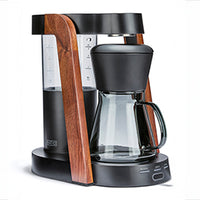 Ratio Eight S2
Ratio Eight S2
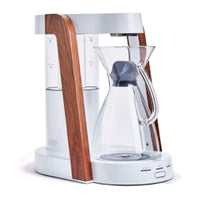 Ratio Eight Original
Ratio Eight Original
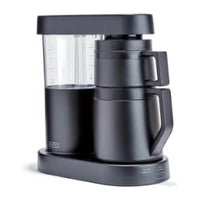 Ratio Six
Ratio Six
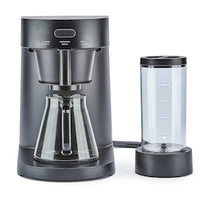 Ratio Four
Ratio Four
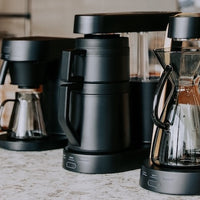 Compare Machines
Compare Machines
